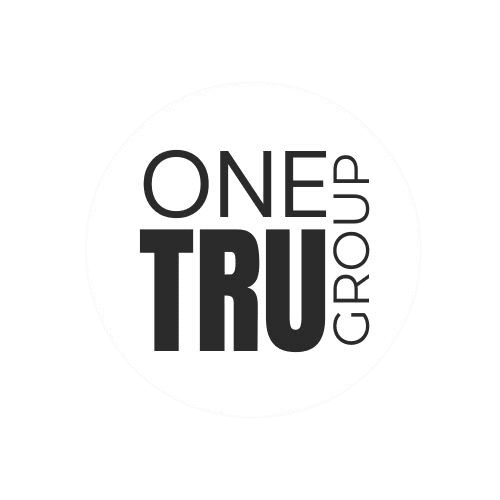What is Average Handling Time (AHT)?
Average Handling Time (AHT) is a critical metric used in customer service to assess the efficiency and effectiveness of support interactions. It represents the average duration taken to resolve customer inquiries and encompasses multiple components. Specifically, AHT includes the total handling time, hold time, and after-call work. Total handling time refers to the amount of time agents spend actively engaging with customers, while hold time is the interval customers spend waiting during calls. After-call work denotes the time agents require to complete any necessary documentation or processes following the interaction.
To calculate AHT, the formula is straightforward: sum the total handling time, hold time, and after-call work for a specific period, and divide this total by the number of calls handled. For instance, if a customer service department has a total handling time of 500 minutes, hold time of 100 minutes, and after-call work of 50 minutes over 20 calls, the AHT would be calculated as follows: (500 + 100 + 50) / 20, resulting in an AHT of 32.5 minutes.
The significance of understanding what is average handling time lies in its ability to directly influence overall operational efficiency. A lower AHT typically indicates that agents are effectively resolving issues quickly, which can enhance customer satisfaction by reducing wait times and expediting service. Conversely, excessively high AHT figures may point to inefficiencies within the support process, possibly stemming from inadequate training, complex issues, or insufficient resources. Monitoring AHT allows organizations to identify trends over time, facilitating more informed decisions aimed at improving customer interactions and workforce management strategies. Hence, grasping the essence of AHT is vital for enhancing service quality and performance in customer support environments.
Why AHT Matters in Customer Service
Average Handling Time (AHT) is a critical metric in evaluating the efficiency and performance of customer service operations. Understanding what AHT signifies is essential for businesses aiming to optimize customer interactions and improve overall satisfaction. It encompasses the total time taken to resolve customer inquiries and includes the handling time as well as the follow-up required afterward. Consequently, AHT is not merely a number; it reflects the effectiveness of customer service agents in addressing customer needs in a timely manner.
The importance of AHT in customer service extends beyond mere efficiency metrics. A manageable AHT can lead to higher levels of customer satisfaction, as clients often appreciate prompt responses to their concerns. When organizations maintain a lower AHT while ensuring quality interactions, customers are more likely to perceive the service as efficient and satisfactory. This perception can foster loyalty, repeat business, and positive word-of-mouth referrals.
In addition to impacting customer satisfaction, AHT is influential in employee productivity. Service agents who handle inquiries effectively within an acceptable AHT contribute to overall operational efficiency. They can manage a greater number of calls or requests, providing the organization with a more robust resource allocation strategy. Consequently, an increased focus on AHT can assist businesses in identifying training opportunities for staff, optimizing their workflow, and ensuring that resources are utilized effectively.
However, it is crucial to strike a balance between reducing AHT and maintaining high service quality. While aiming for lower AHT may seem advantageous, it must not come at the expense of the customer experience. High-quality service should remain the priority, ensuring that customer inquiries are addressed thoroughly and satisfactorily. Thus, effective management of AHT in a customer-centric environment is necessary for achieving the dual goals of efficiency and satisfaction.
Strategies to Optimize AHT
Organizations aiming to optimize their Average Handling Time (AHT) while maintaining high service quality can implement several strategic initiatives. One of the key approaches involves investing in comprehensive training programs for customer service representatives. Proper training equips agents with the knowledge and skills required to handle customer inquiries efficiently, thereby reducing the time needed for each interaction. Topics should cover product knowledge, problem-solving techniques, and effective communication skills, allowing representatives to address customer concerns promptly.
Utilizing technology and automation is another effective strategy for optimizing AHT. Advanced customer service platforms can streamline processes by automating routine tasks, such as data entry and follow-up communications. By minimizing repetitive activities, representatives can focus their efforts on more complex inquiries, which often require personalized attention. Moreover, implementing chatbots for common issues can significantly reduce the volume of incoming calls and allow agents to devote more time to challenging cases.
Streamlining communication channels is also crucial in optimizing AHT. Diversifying support options—such as email, live chat, and social media—enables customers to reach out through their preferred medium, thereby potentially reducing call volume in busy times. By effectively managing these channels and ensuring that representatives are adept at multi-tasking across platforms, organizations can enhance workflow and reduce overall handling times.
Lastly, implementing effective call scripts can guide customer service representatives during interactions. These scripts should be flexible enough to allow for personalization while maintaining a clear structure to resolve inquiries efficiently. Organizations like Zappos have successfully used tailored scripts that empower agents to build rapport with customers while keeping conversations within a targeted time frame. By focusing on these strategic areas, businesses can achieve a balanced approach to optimizing AHT, ultimately enhancing customer satisfaction.
Measuring Success and Continuous Improvement
In the quest for optimal customer service efficiency, understanding average handling time (AHT) is pivotal. To effectively measure the success of AHT management initiatives, businesses should implement a structured approach that incorporates key performance indicators (KPIs). These KPIs provide valuable insights into not only AHT but also the overall customer experience.
Customer satisfaction scores are essential KPIs that can significantly complement AHT analysis. A high AHT may appear detrimental if taken in isolation; however, it is crucial to consider whether customers are satisfied with the service they received. By monitoring satisfaction scores, organizations can gauge the quality of interactions in relation to handling time. This dual analysis allows businesses to pinpoint whether a longer AHT is justified by superior service or whether it hinders customer experience.
Another important KPI to consider is the first call resolution rate, which measures the percentage of customer inquiries resolved during the initial interaction. A higher rate often correlates with lower AHT, as effective problem-solving minimizes the need for follow-up interactions. Businesses should track this metric in conjunction with AHT to ascertain whether improvements in handling time also translate to effective resolution of customer issues.
Continuous improvement in managing AHT is a crucial undertaking. Regular analysis of both AHT and related KPIs enables organizations to refine their strategies based on data-driven insights. Encouraging feedback from customers is an instrumental part of this process; their perspectives can shed light on areas where efficiency can be enhanced without sacrificing service quality.
Incorporating the principles of AHT management alongside relevant KPIs fosters a culture of continuous enhancement, allowing businesses to adapt their methods and ensure they meet and exceed customer expectations. Regular review and iteration are essential to maintaining service excellence in an ever-evolving market landscape.





